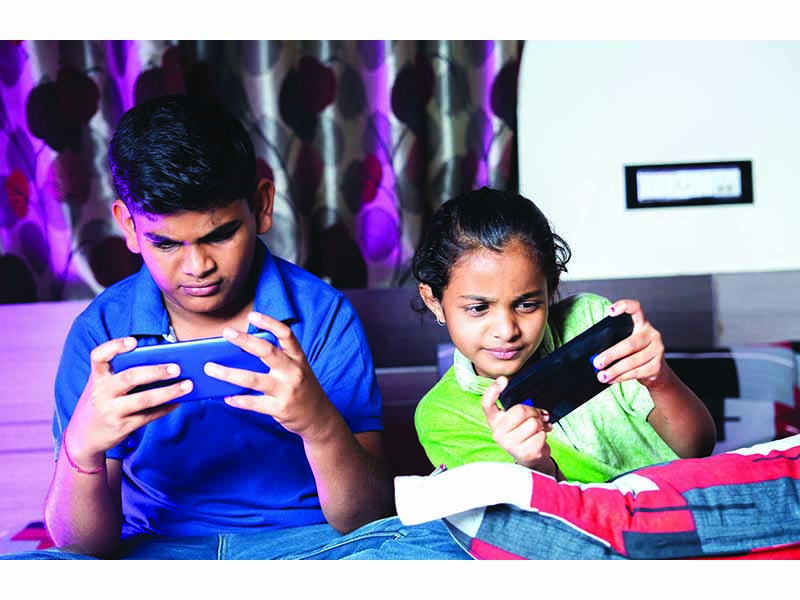Cultivating healthy screen viewing habits
Parents need to focus on developing healthy digital screen viewing habits to safeguard children’s physical and emotional well-being
In the digital age, screen viewing is unavoidable. With technology and electronic screens playing a significant role in education, entertainment and social interaction, it’s impractical to ban screens from children’s lives. Instead, parents need to focus on developing healthy screen watching habits to safeguard children’s physical and emotional well-being.
Screen time is defined as the amount of time spent everyday viewing digital screens, including mobile phones, TVs, computers, tablets, and other handheld audio-visual devices. It is recommended that infants should not be exposed to screens until they are at least two years old.
Healthy vs. unhealthy screen time
Screen time can be categorized into positive/healthy and negative/unhealthy types. Healthy screen time includes screen activities used for education, social interaction with friends and family, and creative endeavors such as learning art or music. In contrast, unhealthy screen time involves watching inappropriate online content, visiting unsafe websites, and playing violent video games.
Healthy screen viewing can be beneficial.
- It provides access to educational resources that promote learning and knowledge acquisition.
- Technology helps us remain connected with friends and family and fosters social interaction.
- Engaging in digital activities as a family enhances bonding between parents and children.
- Enables children to acquire skills such as learning to play a musical instrument, public speaking, etc.
On the other hand, unhealthy screen viewing can have several negative effects on children.
- It adversely affects their physical health — inducing childhood and adolescent obesity, sleep disturbance, headaches, eye strain, and pain in the neck, back, and wrists.
- Mental health problems such as depression, anxiety, and body image concerns.
- Cognitive development delays such as poor language development, learning difficulties (particularly in language and mathematics), and reading challenges.
- Increased risk of experiencing or participating in online bullying.
- Higher likelihood of engaging in substance use.
- Decreased academic success and poor attention span.
Therefore, it’s important to monitor and limit screen time of children.
The Indian Academy of Pediatrics (IAP) has made recommendations for limiting screen time of infants, children, and adolescents as under:
Children under 24 months. No screen time at all. An IAP advisory specifically states that screens should not be used to calm children or during mealtimes.
2-5 years. Limited to a maximum of one hour per day under parental supervision.
5-10 years. Not exceeding two hours per day. Moreover, it is important that screen watching doesn’t replace outdoor play, sleep, family interaction, peer relationships, study, and skill development activities.
10-18 years. Adolescents should balance digital screen time with other activities necessary for their holistic development. This means at least one hour of outdoor physical activity, 8-9 hours of night sleep, with adequate time devoted to schoolwork, meals, hobbies, social interaction, and family time. It is also important to educate adolescents on safe usage of screen devices and to monitor their media use.
Eye safety guidelines
- To protect children’s eyes, it is recommended that after every 20 minutes of digital screen viewing, they take a break for 20 seconds and look at an object at least 20 ft away.
- Ensure that children keep devices about 15-20 cm from their eyes. Additionally, television should be placed at a maximum distance to prevent viewing from very close range.
- Remind children to blink often, as they may forget to do so when they are focused on a game or a video clip.
Healthy screen habits
Here are some ways to cultivate healthy screen habits in children:
- Create a warm, nurturing, supportive, and secure environment at home.
- Turn off all screens one hour before bedtime.
- Encourage children to maintain good posture while using computers and mobile phones.
- Discourage slouching or keeping the neck bent for extended periods. Ensure they have a comfortable chair with back support.
- Ban content and games that depict violence.
- Install protective software to restrict access to inappropriate websites.
- Don’t use digital media to distract children.
- Ban all screen watching during mealtimes.
- Ensure screen viewing is not a substitute for physical activities or social interaction.
- Discourage children under 18 years from opening social media accounts.


















Add comment